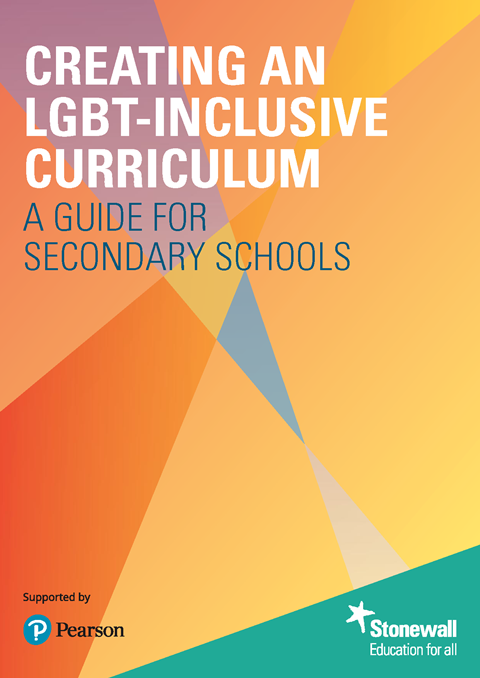Zeynab Hyder-Wright reviews the Stonewall guide for secondary schools

I started to read Creating an LGBT-inclusive curriculum with some scepticism. LGBT-phobic bullying exists in many areas of school society, and introducing an LGBT-inclusive curriculum in all subjects for all students and staff seemed a mammoth task. However, I feel this free guide offers a comprehensive account of how the task could be achieved.
The guide deals with 12 different subjects, including science, and features simple, employable suggestions for making each curriculum inclusive. For example, in maths, it suggests using questions that include fictitious ‘Mr X and Mr Y’ who are calculating holiday costs, or mentioning notable mathematicians such as Alan Turing. When discussing IVF, for example, in science lessons, example scenarios could focus on a same-sex couple. They also suggest investigating gender stereotypes in STEM careers.
The authors emphasise their recommendations do not mean changing everything. On the contrary, they offer suggestions on how to amend or adapt lessons or build on existing structures. If an opportunity arises in class to discuss an LGBT-related issue, take it without fear of being inappropriate – highlight relevant things as they come.
Some alarming statistics are highlighted, such as that two-out-of-five LGBT pupils have never been taught anything LGBT-related in school. This document paves a way to opening up dialogue within our classrooms, which will send a message to staff and pupils that ‘it’s ok to be who you are’, in a non-prescriptive manner.
In my opinion, Creating an LGBT-inclusive curriculum can be a success when used in conjunction with teaching already occurring. It’s not about completely overhauling the curriculum, but ensuring that LGBT students are less isolated. The impact on our teaching will be minimal, but the impact on an LGBT student could be life-changing. I know that reading this document will allow me to recognise more opportunities in my own teaching to highlight things when they arise. This may come more naturally to some teachers than others, so opening up the discussion among staff is paramount for identifying cross-curricular links. In time, staff and students will reap the benefits of having an LGBT-inclusive curriculum.
The LGBT discussion seems to already be happening, and in some classrooms it is not uncommon to hear issues being raised. The diversity of our students must be reflected in the curriculum. However, the challenge may be in changing the mind-set of a handful of teachers who believe it’s not relevant.
Download Creating an LGBT-inclusive curriculum (pdf) from Stonewall.









No comments yet